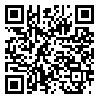Volume 14, Issue 2 (March & April 2023)
BCN 2023, 14(2): 247-262 |
Back to browse issues page
1- Department of Pharmacology, Amity Institute of Pharmacy, Amity University, Nodia, India.
2- UQ Diamantina Institute, Translational Research Institute, The University of Queensland, Australia.
2- UQ Diamantina Institute, Translational Research Institute, The University of Queensland, Australia.
Abstract:
Introduction: A neurodevelopmental disorder, autism is typically identified with three primary behavioral consequences, such as social impairment, communication problems, and limited or stereotypical behavior. Because of its co-morbidity and lack of therapeutic options, autism is a global economic burden. A short chain of fatty acid, propionic acid is formed biologically by the gut microbiome. Propionic acid levels that are too high can cause leaky intestines, which can lead to autism-like symptoms.
Methods: To induce autism, male Albino Wistar rats were given propionic acid (250 mg/kg/po on the 21st, 22nd, and 23rd postnatal days). Rats also received a ryanodine receptor antagonist (Ruthenium red: 3 mg/kg/po; postnatal 21st to 50th day) to see what influence it had on propionic acid-induced autism. Anxiety, social behavior, and repeated behaviors were all assessed, as well as oxidative stress, inflammatory indicators, neuro signaling proteins, and blood-brain barrier permeability.
Results: Ruthenium red was found to counter the propionic acid-induced increases in anxiety, repetitive behavior prefrontal cortex levels of IL-6, TNF-α, TBARS, Evans blue leakage, and water content along with decreases in social behavior, IL-10, and GSH followed by hippocampus CREB and BDNF levels.
Conclusion: Ryanodine receptor antagonists presented a neuroprotective effect in propionic acid-induced conditions like autism by modulatory effects on social and repetitive behavior, oxidative stress, neuroinflammation, and neuroprotein changes. Ryanodine receptors can be further explored in depth to manage autism as a condition.
Methods: To induce autism, male Albino Wistar rats were given propionic acid (250 mg/kg/po on the 21st, 22nd, and 23rd postnatal days). Rats also received a ryanodine receptor antagonist (Ruthenium red: 3 mg/kg/po; postnatal 21st to 50th day) to see what influence it had on propionic acid-induced autism. Anxiety, social behavior, and repeated behaviors were all assessed, as well as oxidative stress, inflammatory indicators, neuro signaling proteins, and blood-brain barrier permeability.
Results: Ruthenium red was found to counter the propionic acid-induced increases in anxiety, repetitive behavior prefrontal cortex levels of IL-6, TNF-α, TBARS, Evans blue leakage, and water content along with decreases in social behavior, IL-10, and GSH followed by hippocampus CREB and BDNF levels.
Conclusion: Ryanodine receptor antagonists presented a neuroprotective effect in propionic acid-induced conditions like autism by modulatory effects on social and repetitive behavior, oxidative stress, neuroinflammation, and neuroprotein changes. Ryanodine receptors can be further explored in depth to manage autism as a condition.
Type of Study: Original |
Subject:
Behavioral Neuroscience
Received: 2020/10/14 | Accepted: 2021/06/13 | Published: 2023/03/1
Received: 2020/10/14 | Accepted: 2021/06/13 | Published: 2023/03/1
| Rights and permissions | |
 |
This work is licensed under a Creative Commons Attribution-NonCommercial 4.0 International License. |





